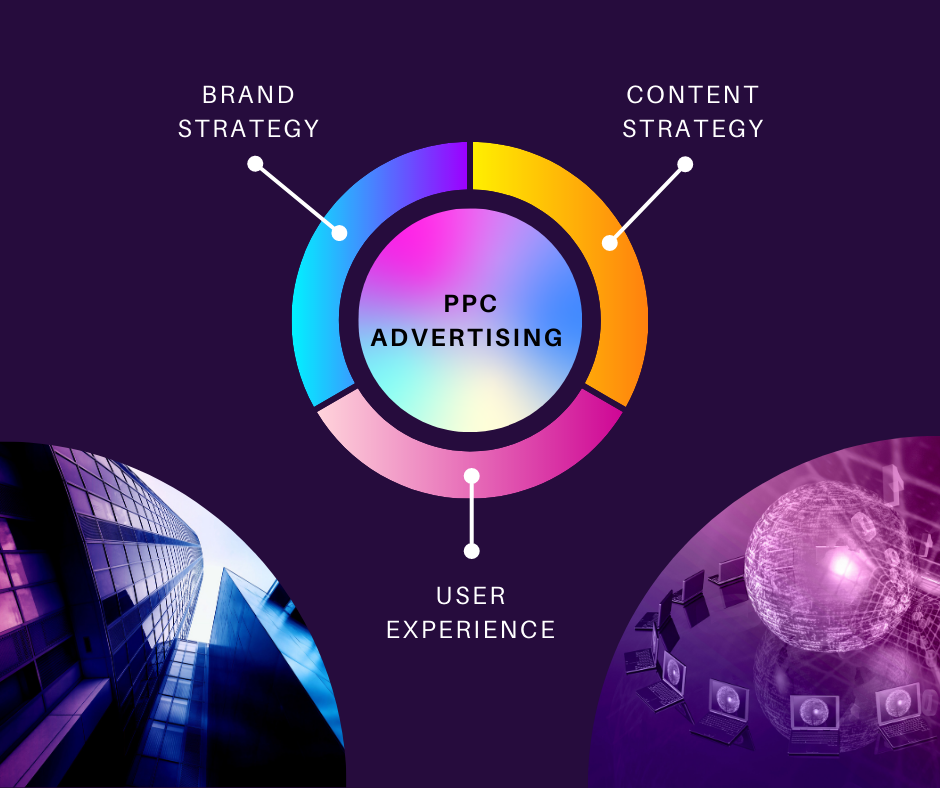
PPC Advertising Made Simple: A Beginner's Guide to Successful Online Advertising
Share
Outline:
- Introduction to PPC Advertising
- Understanding the Basics of Pay-Per-Click (PPC)
- Benefits of PPC Advertising
- Setting Up Your First PPC Campaign
- Keyword Research and Selection
- Creating Compelling Ad Copy
- Structuring Your PPC Campaigns
- Setting Budgets and Bids
- Tracking and Measuring Performance
- Optimizing Your PPC Campaigns
- Targeting Specific Audiences
- Ad Extensions and Ad Formats
- Ad Testing and Experimentation
- Remarketing and Display Advertising
- Common Mistakes to Avoid in PPC Advertising
- Conclusion
- FAQ
PPC Advertising Made Simple: A Beginner's Guide to Successful Online Advertising
Pay-Per-Click (PPC) advertising is an effective and widely used method for promoting businesses and driving targeted traffic to websites. In this beginner's guide, we will explore the fundamental aspects of PPC advertising and provide you with actionable insights to create successful online advertising campaigns.
Understanding the Basics of Pay-Per-Click (PPC)
PPC is an advertising model where advertisers pay a fee each time their ad is clicked. It allows businesses to bid on keywords relevant to their products or services and display their ads on search engine results pages or other online platforms. The ads are shown to users who are actively searching for related information, increasing the likelihood of attracting qualified leads.
Benefits of PPC Advertising
PPC advertising offers numerous benefits for businesses:
- Instant visibility: Unlike organic search results, PPC ads provide instant visibility on search engine results pages, driving immediate traffic to your website.
- Targeted audience: PPC allows you to target specific keywords, demographics, locations, and interests, ensuring your ads reach the right audience.
- Cost control: You have full control over your budget and can set daily or monthly spending limits, making PPC advertising suitable for businesses of all sizes.
- Measurable results: PPC platforms provide detailed analytics and reporting, allowing you to track the performance of your campaigns and measure the return on investment (ROI).
Setting Up Your First PPC Campaign
To get started with PPC advertising, follow these steps:
- Choose a PPC platform: Popular platforms include Google Ads, Bing Ads, and social media platforms like Facebook and Instagram.
- Define your goals: Determine the objective of your campaign, whether it's driving website traffic, generating leads, or increasing sales.
- Set a budget: Decide how much you are willing to spend on your campaign and allocate your budget accordingly.
- Select your target audience: Identify the demographics, interests, and locations of your target audience to ensure your ads are shown to the right people.
- Choose keywords: Conduct keyword research to identify relevant keywords that align with your business and target audience.
- Create compelling ad copy: Craft engaging and persuasive ad copy that entices users to click on your ads.
- Optimize landing pages: Ensure your landing pages are relevant, user-friendly, and optimized for conversions.
Keyword Research and Selection
Keyword research is a crucial step in PPC advertising. It involves identifying the keywords that users are likely to search for when looking for products or services similar to yours. Here's how to conduct effective keyword research:
- Brainstorm relevant keywords: Start by brainstorming a list of keywords related to your business and industry.
- Use keyword research tools: Utilize keyword research tools like Google Keyword Planner, SEMrush, or Moz Keyword Explorer to expand your keyword list and gather data on search volume and competition.
- Analyze competitor keywords: Research your competitors' keywords to identify opportunities and gain insights into their strategies.
- Select a mix of broad and long-tail keywords: Include both broad keywords with high search volume and more specific long-tail keywords to capture a wider range of search queries.
Creating Compelling Ad Copy
Compelling ad copy is crucial for capturing the attention of users and encouraging them to click on your ads. Follow these tips to create effective ad copy:
- Highlight unique selling points: Clearly communicate the unique benefits and features of your products or services.
- Use strong calls-to-action: Encourage users to take action by using compelling and actionable language in your ad copy.
- Incorporate relevant keywords: Include your target keywords in your ad copy to increase relevancy and improve ad quality.
- Emphasize benefits over features: Focus on how your products or services can solve problems or meet the needs of your target audience.
Structuring Your PPC Campaigns
Proper campaign structuring is essential for organizing your PPC ads effectively. Here's a recommended structure:
- Campaigns: Divide your PPC efforts into different campaigns based on product categories, geographic locations, or specific marketing goals.
- Ad groups: Within each campaign, create ad groups that contain a set of closely related keywords and ads.
- Keywords and ad copy alignment: Ensure that the keywords in each ad group are closely aligned with the corresponding ad copy and landing page.
Setting Budgets and Bids
Setting budgets and bids is crucial to control your PPC spending and maximize your ad visibility. Consider the following factors when setting budgets and bids:
- Cost per click (CPC): Determine the maximum amount you are willing to pay for a click on your ads.
- Ad position and quality score: Higher bids can improve your ad's position on search engine results pages, but quality score and ad relevance also play a significant role.
- Monitor and adjust: Regularly monitor the performance of your campaigns and adjust your budgets and bids based on the results.
Tracking and Measuring Performance
Tracking and measuring the performance of your PPC campaigns allows you to evaluate their effectiveness and make data-driven optimizations. Here are some key performance metrics to monitor:
- Click-through rate (CTR): The percentage of users who click on your ads after seeing them.
- Conversion rate: The percentage of users who complete a desired action, such as making a purchase or filling out a form, after clicking on your ads.
- Cost per acquisition (CPA): The average cost of acquiring a new customer or lead through your PPC campaigns.
- Return on ad spend (ROAS): The revenue generated compared to the cost of your advertising investment.
Optimizing Your PPC Campaigns
Continuous optimization is crucial to improve the performance and ROI of your PPC campaigns. Consider the following optimization strategies:
- A/B testing: Test different variations of your ad copy, landing pages, and calls-to-action to identify the most effective elements.
- Negative keywords: Exclude irrelevant or low-performing keywords to prevent your ads from showing for unrelated searches.
- Ad scheduling: Analyze the performance of your ads at different times of the day or week and adjust your ad scheduling accordingly.
- Geographic targeting: Refine your targeting by focusing on specific geographic locations that are most relevant to your business.
Targeting Specific Audiences
Refining your targeting to reach specific audiences can help improve the effectiveness of your PPC campaigns. Consider the following targeting options:
- Demographics: Target users based on age, gender, income, or other demographic factors relevant to your target audience.
- Interests and behaviors: Reach users who have shown interest in specific topics or behaviors related to your products or services.
- Remarketing: Target users who have previously interacted with your website or shown interest in your products or services.
- Custom audiences: Utilize customer data or create lookalike audiences based on your existing customer base to reach similar potential customers.
Ad Extensions and Ad Formats
Ad extensions allow you to provide additional information and enhance the visibility of your ads. Some common ad extensions include:
- Sitelink extensions: Direct users to specific pages on your website.
- Call extensions: Display your phone number so users can call your business directly.
- Location extensions: Show your business address and a map to users searching for local services.
- Review extensions: Display positive reviews or ratings to build trust and credibility.
Ad Testing and Experimentation
Testing and experimenting with different ad variations can help you optimize your PPC campaigns. Consider the following testing strategies:
- A/B testing: Create multiple versions of your ads with different headlines, descriptions, or calls-to-action to identify the most effective combinations.
- Ad rotation: Set your ads to rotate evenly to ensure each ad variation gets equal exposure and data for comparison.
- Performance analysis: Monitor the performance of different ad variations and make data-driven decisions based on the results.
Remarketing and Display Advertising
Remarketing allows you to target users who have previously visited your website but did not convert. Consider the following remarketing strategies:
- Dynamic remarketing: Show personalized ads to users based on the specific products or pages they viewed on your website.
- Display advertising: Expand your reach by displaying image or video ads on relevant websites within the Google Display Network or other advertising platforms.
Common Mistakes to Avoid in PPC Advertising
While implementing PPC advertising, be mindful of the following common mistakes:
- Neglecting keyword research: Inadequate keyword research can lead to irrelevant traffic or missed opportunities.
- Poor ad copy and landing page alignment: Ensure that your ad copy and landing pages are aligned and provide a consistent user experience.
- Failing to track and analyze data: Regularly monitor and analyze campaign data to identify areas for improvement and optimize performance.
- Ignoring mobile optimization: With the growing number of mobile users, optimize your ads and landing pages for mobile devices.
Conclusion
PPC advertising can be a powerful tool for driving targeted traffic and achieving your marketing goals. By understanding the basics, conducting thorough keyword research, creating compelling ad copy, and continuously optimizing your campaigns, you can effectively leverage PPC to boost your online advertising efforts and reach your target audience.
FAQ
-
What is the cost of PPC advertising?
The cost of PPC advertising varies depending on factors such as industry competitiveness, keyword demand, and target audience. You can set your own budget and bids to control your spending. -
How long does it take to see results from PPC campaigns?
PPC campaigns can start driving traffic and generating results immediately after launch. However, optimizing and refining your campaigns over time will yield better performance. -
Are there any alternatives to Google Ads for PPC advertising?
Yes, apart from Google Ads, there are other platforms like Bing Ads, Facebook Ads, and LinkedIn Ads that offer PPC advertising options. -
How can I measure the success of my PPC campaigns?
Key metrics to measure the success of your PPC campaigns include click-through rate (CTR), conversion rate, cost per acquisition (CPA), and return on ad spend (ROAS). Use analytics tools provided by the PPC platforms to track and analyze these metrics. -
Can I target specific locations with PPC advertising?
Yes, PPC platforms allow you to target specific geographic locations, ensuring your ads are shown to users in your desired locations.

